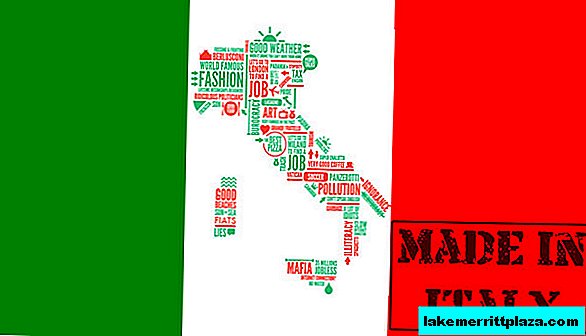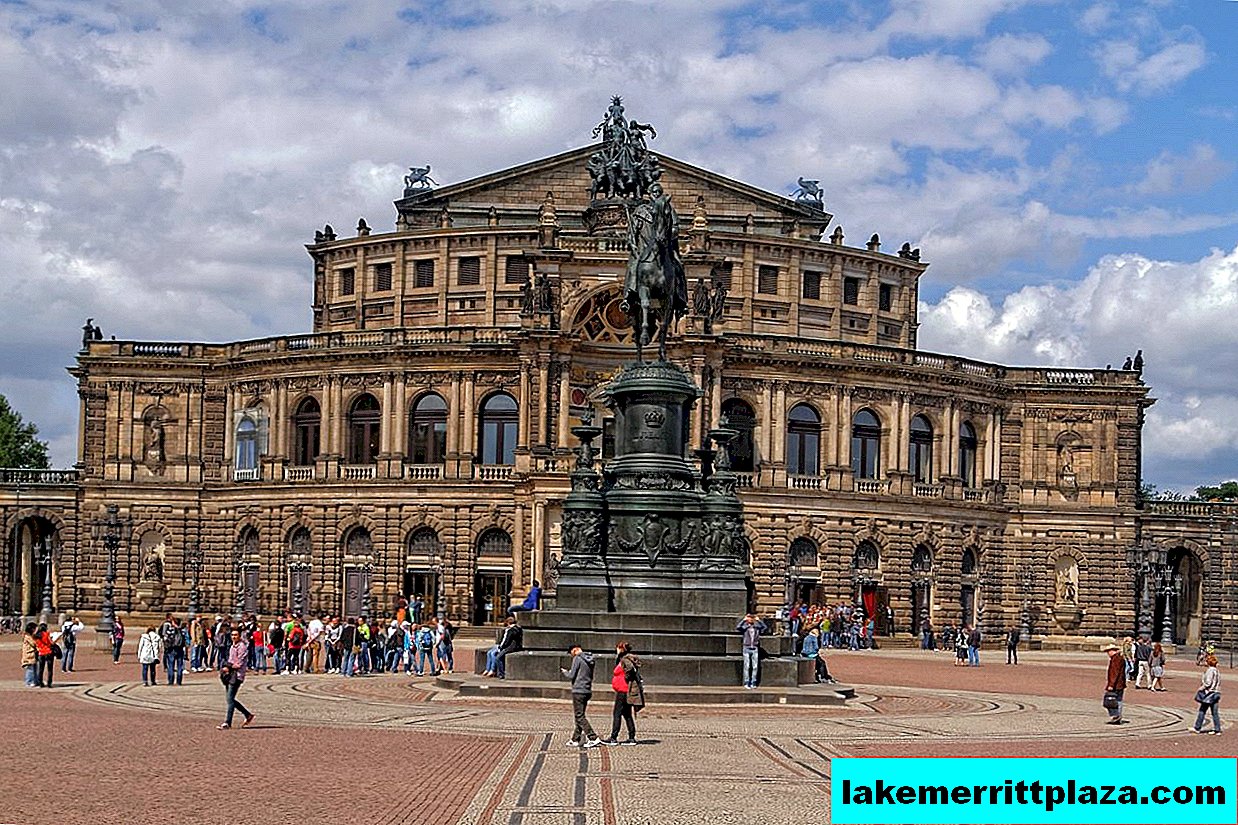In Rome, each person finds for himself something important, necessary, interesting. See my TOP 10 of what needs to be done in Rome; which corners of the Eternal City to visit; what historical secrets to join?

Must see Coliseum
Rome - the center of attraction for travelers around the world - a city that has carried its greatness through the centuries. In Rome, each person finds for himself the most important, necessary, interesting: historical riches and art treasures, the inviting splendor of shop windows and the fun of metropolitan parties, the comfort of old streets and the hospitality of family restaurants.
What needs to be done in Rome? In which corners of the Eternal City you need to visit, what historical secrets should you join?
1. Must visit the Coliseum
Grand amphitheater. The "visiting card" of the great city is visited by at least five million tourists a year. The Roman "wonder of the world" is in ruins, but this does not detract from its power and historical value. The scale of the Coliseum is amazing.
To visit the Coliseum (Colosseum + Palatine + Roman Forum) you need to purchase a two-day ticket.
- It is most convenient to order it on the Internet (this way you will avoid standing in a long line, however, the ticket price of 12 € will increase by another 2 €). On the same ticket, tourists visit the Palatine and the Roman Forum.
- You can pass the crowd facing the Coliseum if you have a Roma Pass tourist map. With it you will go through a separate, small queue.
- If you buy a two-day ticket at the box office of the Roman Forum, you will not have to stand in line at the Colosseum either.
All information about the Coliseum is provided on its website by the Roman General Directorate of Archaeological Heritage. The amphitheater can be visited daily - from 8:30 to 19.
2. Visit the "temple of all gods" - the Pantheon

At the entrance to the Pantheon
Although the Pantheon is now no longer a temple, but a national mausoleum, its visitors believe the ancient prediction: if you stand right under the hole in the huge dome, the gods will absolve the sins of those standing.
The dome of the Pantheon is a hemisphere, divided into parts by caissons. There are no windows in it, there is only one hole in the center through which light penetrates ... and divine grace.
Cleansing from sins and visiting the magnificent building is possible for free. Information on the operating mode is given on the Pantheon website. All days except Sunday, admission is possible from 9:00 to 19:30; on Sundays - until 18:00.
3. Visit Piazza Navona

As many as 3 fountains in Piazza Navona
If your stay in Rome is limited, go to Piazza Navona! Here, at the three fountains in the square, tourists and Romans gather in the summer days. Navona is the center of the busy life of the capital. Something always happens here: street concerts, performances by artists and clowns. There are "living statues" in the square, artists paint portraits and cartoons. Watching this "reality show" is most convenient from open cafes.
Prices for Piazza Navona "bite", in a cafe it is better to take only a cup of coffee, a portion of ice cream. It is irrational to buy souvenirs in local stores - everything is too expensive here.
4. Trevi Fountain - throw a coin for good luck

Trevi Fountain (Fontana di Trevi)
The Trevi Fountain is glorified in Italian cinema - the heroes of the cult film Fellini's "Sweet Life" bathed in it. There is a tourist sign - a coin thrown in Trevi will provide the thrower with a return to Rome, two coins promise love, three promise a fast wedding, four bring wealth. Indeed, the fountain provides good wealth to the Roman authorities - up to 3,000 euros accumulate every day at the bottom of the reservoir!
Around Trevi, too, is always crowded. If you want to take a picture on the background of the fountain - come in the morning, early.
5. Spend a day at Villa Borghese

Park Villa Borghese
Families with children, art lovers, theatergoers and moviegoers, tourists who want to relax in a cozy park area come to Villa Borghese. The Borghese complex is located near Rome's main Termini Station.
In the museums of the villa are masterpieces of ancient, medieval and modern art; paintings by Rubens, Monet and Van Gogh, a large collection of works by Caravaggio, cultural objects of the Etruscans. For tourists who know the Italian language, there is the opportunity to visit the film premiere or performance of the Globe Theater, modeled on the London Shakespeare Theater.
Children will certainly enjoy the biopark, in which elephants and charming flamingos live. An amusement park has been created for the entertainment of the public, an ice rink is open in winter. The Spanish Steps leads to the main entrance of the park.
Villa Borghese can be found on the websites of the Gallery of Modern Art and the Borghese Gallery, Museums of Etruscan Art, Pietro Canonica and Carlo Bilotti; on the official website of the Biopark.
6. See the smallest state in the world

Saint Paul's Cathedral
The tiny Vatican is an amazing country, an independent sovereign state, the center of world Catholicism. They do not fly to this country and do not go — they come on foot. The Vatican has a high concentration of historical monuments, architectural masterpieces, museum displays. Here you can visit museums - Egyptian and Etruscan, see the oldest gospel of the world, appreciate the art treasures of the Pinakothek and the Sistine Chapel.
If you go up to the observation platform of St. Peter's Basilica, you can see the Eternal City from a height. Do not forget about proper clothing: sleeves, skirts and trousers should be long.
Learn more about the Vatican Museums here, and online tickets can be purchased here. Ticket price - 17 euros; The opening hours of the museums are from 9:00 to 18:00, except Sunday.
7. Make dizzying shopping

Endless shopping streets
In the capital of world fashion you should definitely go shopping and boutiques. In the Piazza di Spagna area you will find monobrand shops of fashion houses of Gucci, D&G, Armani and Valentino. Look for youth brands at the Piazza Campo dei Fiori; affordable trademarks collected on Via del Corso. Fans of profitable shopping are waiting for Roman outlets.
In mid-January in the capital of Italy begins the season of discounts (it lasts until the end of February). There are also summer sales: they open in mid-July and last until the end of summer. Significant discounts on goods - up to 70%.
8. Take a Segway tour of the medieval district of Trastevere

Walking along Trastevere, photo by Claire Hartley
The romantic Trastevere district, located south of the Vatican on the eastern slope of the Janiculum hill, is one of the most impressive places in Rome. Here you will not find noisy crowds of tourists, there are almost no hurry on the affairs of the townspeople. Narrow streets, small family restaurants, beautiful churches await you in Trastevere.
The brightest object in the area is Villa Farnesina. This 16th-century historical monument houses a museum of painting and architecture. The building has preserved the original frescoes of Raphael, paintings by Peruzzi, Il Sodoma. The villa is surrounded by a beautiful orange garden.
Book a Segway tour and take in the views of Rome.
Opening hours of Villa Farnesin: from 9:00 to 14:00, from Monday to Saturday. For children under 10 years of age, free admission; The price of an “adult ticket” is € 6.
9. Rate famous Italian cuisine

How not to eat spaghetti!
Italian cuisine is sung by poets, glorified by writers and filmmakers. In Rome, any trip to historical places or shops should be combined with a fascinating gastronomic tour. There are hundreds of options for such culinary travels.
Start your morning with a cup of coffee in the outdoor cafe near St. Mary's Basilica. Enjoy ice cream in the oldest Roman gelateria at the Leoninsky wall. Experience the quality of signature pasta at the Osteria Barberini family restaurant. Dine on pizza in the cute little La Prosciutteria gastropub, next to the Trevi Fountain.
10. View from a height of the Eternal City from several viewing platforms

View of Rome from the roof of Vittoriano
All Rome, even from a great height, cannot be grasped. A city on seven hills needs to be surveyed from different points. Each time it will open in a new way.
The best observation deck is located in the Vatican, under the dome of the grandiose basilica of Sancti Petri - St. Peter's Basilica. The viewing terrace of the Castle of Saint Angela offers panoramic views of the Tiber River and the Trastevere district. From the top of the monumental monument of Vittoriano, the Forum and the Colosseum are clearly visible. From Pincho Hill you can enjoy idyllic pastoral landscapes.
And what is your mandatory plan? Write in the comments.








